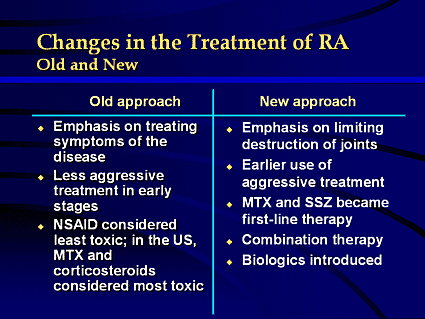Current Stem Cell Treatments for Orthopedic Conditions
Current Stem Cell Treatments for Orthopedic Conditions
The stem cells have a unique ability to divide and become more specialized cells forming cells like bone, blood, or muscle. It is this ability that makes them attractive agents in many areas of medicine. They can therefore be used to fight very many diseases in the regenerative medicine. Another advantage of stem cell therapy treatments is that autologous stem cell transport is made possible. This means that a person may be treated by doctors harvesting the stem cells from the patient and having the stem cells reimplanted into the same patient after finding out what was lacking in the patient. This reduces risks of infection as well as rejection which are helpful to the patient.
Today the stem cell therapy has become the game changing approach to treatment of orthopedic conditions. The ability of these stem cells to differentiate into more specialized cells has made them a valuable target in treatment of musculoskeletal conditions. Particularly the use of bone marrow stromal cells has attracted the attention of researchers who are in pursuit of finding out how these stem cells can be applied to end human misery caused by some diseases.
Stem cells are a unique type of cells, unlike the other cells in the body the stem cell have the ability to self-renew, they have the ability to divide several times giving rise to differentiated cells which are suited for specific functions hence can be used to replace or regenerate worn out cells in the body causing pain and discomfort. They can form cardiac, liver, fat, bone, cartilage, nerve, and connective tissue cells among other more specialized cells. Autologous stem cell therapy harnesses the regenerative power of your body’s own stem cells as a treatment option for degenerative orthopedic conditions.

Today there are hospitals that have embraced the use of stem cells therapy in treating orthopedic conditions that were rather not easily treated in the past. They offer this autologous stem cell therapy, which embraces the regenerative power of mesenchymal stem cells to give patients another treatment option for dealing with orthopedic conditions such as osteoarthritis and other degenerative joint conditions. Patients who have the following diseases can benefit from stem cell therapy;
- Degenerative Joint Changes, Including Osteoarthritis
- Disc-related Back Pain
- Meniscus Tears
- Non-Union Fractures
- Avascular Necrosis
- Bone Loss
- Cartilage Defects
- Osteonecrosis
- Tendonopathies
Orthopedic Areas in which Stem Cell Therapy is applicable
Spine – the stem cell therapy is applicable in treatment of the degenerated intervertebral disk which is known to cause pain and morbidity to many patients. The stem cell therapy brings into the field of regenerative medicine some bits of effectiveness. In treatment of spine, patients who fail to respond to conservative medicine are left with one option-surgery that may have limited success and is also very invasive. Cell-based tissue treatments, including mesenchymal stem cell injections for degenerative disc subjects have been shown to diminish the incidence of low back pain, with clinical results noting improvement in back pain and regeneration of the disc tissue. In cases where spinal fusions are necessary, the use of stem cells through bone marrow aspirate has shown greater success in obtaining fusion through bone formation as compared to standard fusion techniques. Daily the number of institutions using the stem cell therapy to treat orthopedic conditions is increasing.
Articular Cartilage – when the articular cartilage is damaged, the potential to repair it are limited and this can often lead to arthritic diseases many years later. This damage may be caused by injury. The vulnerability of the articular cartilage makes it important for it to be well handled in cases of injury. studies that have been done on the applicability of the stem cell therapy to repair damaged articular cartilage have shown that stem cell therapy have favorable outcomes in this area than current techniques of micro fracture and autologous chondrocyte implantation. Most studies use mesenchymal stem cells derived from the bone marrow.
 Osteonecrosis – Osteonecrosis or avascular ischemia of the hip can be associated with progression to an advanced arthritic joint. Standard treatment for osteonecrosis has included cord decompression with limited results. Stem cell therapy holds key to success in this area of orthopedic treatment. Studies on this area have shown that patients treated with mesenchymal stem cells improved than those treated with cord decompression.
Osteonecrosis – Osteonecrosis or avascular ischemia of the hip can be associated with progression to an advanced arthritic joint. Standard treatment for osteonecrosis has included cord decompression with limited results. Stem cell therapy holds key to success in this area of orthopedic treatment. Studies on this area have shown that patients treated with mesenchymal stem cells improved than those treated with cord decompression.
Bone – some damages on the bone may require transplantation of the bone plus other bone components. This is the effective way of restoring the bone structure. Being that the mesenchymal stem cells can be differentiated into bone cells and be used to replace the damaged bone components, stem cell therapy becomes the most appropriate treatment for bone damage.
Tendons and Ligaments – Autografts, allografts, and resorbable materials have been used to repair defects in tendons and ligaments however these methods puts the life of the patient at risk which may include formation of scars, donor morbidity and even tissue rejection. With autologous stem cell transplant all these risks are alleviated plus the mesenchymal stem cells may also be used alongside tissue allografts as this gives better results by improving the biochemical properties of the tissue allografts.
Stem cell therapy is a promising treatment for orthopedic diseases; you may tap into the unique medicinal properties of the stem cells to help you beat orthopedic conditions. Visit us at AWAREmed Health and Wellness Resource Centre at Myrtle Beach, South Carolina. Dr. Dalal Akoury (MD) an expert in integrative and regenerative medicine will be able to help.









 As known rheumatoid arthritis affect specific parts of the body, especially the joints where they damage the every tissue. With the stem cell therapy these damaged tissues can be targeted locally by introducing large amounts of stem cells into the areas where they are mostly needed. Here are some of the ways through which the stem cells can be administered into the affected areas of the body.
As known rheumatoid arthritis affect specific parts of the body, especially the joints where they damage the every tissue. With the stem cell therapy these damaged tissues can be targeted locally by introducing large amounts of stem cells into the areas where they are mostly needed. Here are some of the ways through which the stem cells can be administered into the affected areas of the body.




















 Coley’s Toxins and Alternative Cancer Treatment
Coley’s Toxins and Alternative Cancer Treatment


 Detoxification and Cancer treatment
Detoxification and Cancer treatment






